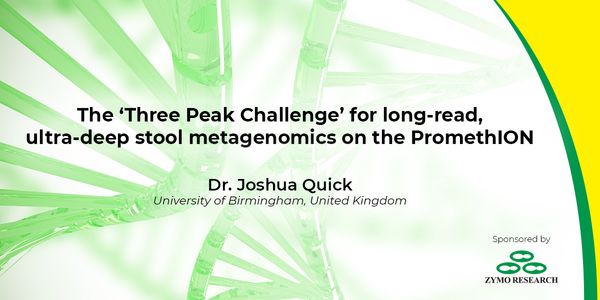Universe
The universe contains all of space, time, matter, and energy. The observable universe measures approximately 93 billion light-years in diameter today, although the size of the entire universe remains unknown.
-
OCT 16, 2019 | 10:00 AMDATE: October 16, 2019TIME: 9:00am PDTManual titrations can be extremely challenging and frustrating, impeding your efficiency in the lab. More importantly, these issues can lead to inc...OCT 16, 2019 | 8:00 AMDATE: October 15, 2019TIME: 8:00am PDTIon mobility-mass spectrometry (IM/MS) is a rapid, gas-phase separation technique that has become an integral part of the analytical repertoire of t...OCT 15, 2019 | 10:00 AMDATE: October 15, 2019TIME: 10:00am PDTAdvances in Next-Generation Sequencing technologies as well as bioinformatic tools have advanced our ability to research and explore both human...Metastatic castration resistant prostate cancer (mCRPC) refractory to secondary hormonal treatments such as enzalutamide or abiraterone acetate are the most lethal of prostate cancers. In thi...Speaker: Tian Zhang, MD, MHS
Tumor mutational burden (TMB) is an emerging biomarker that correlates with response to immunotherapeutic agents, such as checkpoint inhibitors. Recent studies indicate that a high mutation l...
Speaker:
Ravindra Kolhe, MD, PhD
Osteosarcoma (OS) is the most common bone tumor in pediatric and adolescent/young adult patients. Over the past three decades, significant improvements in the survival rates or therapeutic ap...
Speaker:
Troy McEachron, PhD
Presented at: Cancer Research & Oncology Week Virtual Event Series 2019
Sponsored By: NanoString Technologies
Sponsored By: NanoString Technologies
Accumulation of structural variations (SVs) across the genome is a known trigger factor for oncogenesis. Structural mutations have been clearly implicated in a number of cancers, most notably...
Speaker:
Sven Bocklandt, PhD
Blockade of CTLA-4 and PD-1, members of the B7/CD28 family, have proven to be the most successful cancer immunotherapies to date. While the current therapeutic focus remains on B7/CD28 family...
Speaker:
Anthony Persen, PhD
Presented at: Cancer Research & Oncology Week Virtual Event Series 2019
Sponsored By: ACD - A Bio-Techne Brand
Sponsored By: ACD - A Bio-Techne Brand
The Keynote Address will highlight eight actions that individuals can take to reduce their cancer risk. These recommendations span lifestyle modifications, cancer screening and molecular prev...
Speaker:
Ernest Hawk, MD, MPH
In this webinar, we will be discussing some of our most recent testing using our Cas9 proteins, Cas9 RNP nickases in a variety of human cell types, including primary T-cells. Cas nucleases wh...
Speaker:
Jacob Lamberth
The quest to cure cancer through the manipulation the immune system has been at the forefront of science for the past half-decade. The result has been the emergence of a multitude of promisin...
Speaker:
Josh Mahlios, PhD
Presented at: Cancer Research & Oncology Week Virtual Event Series 2019
Sponsored By: Miltenyi Biotec
Sponsored By: Miltenyi Biotec
























